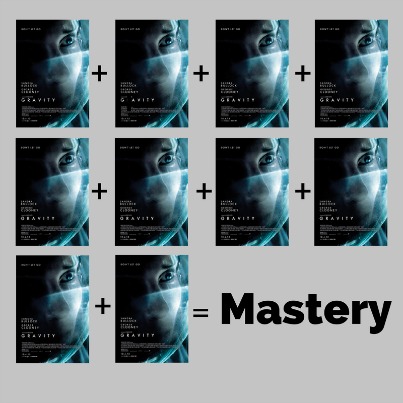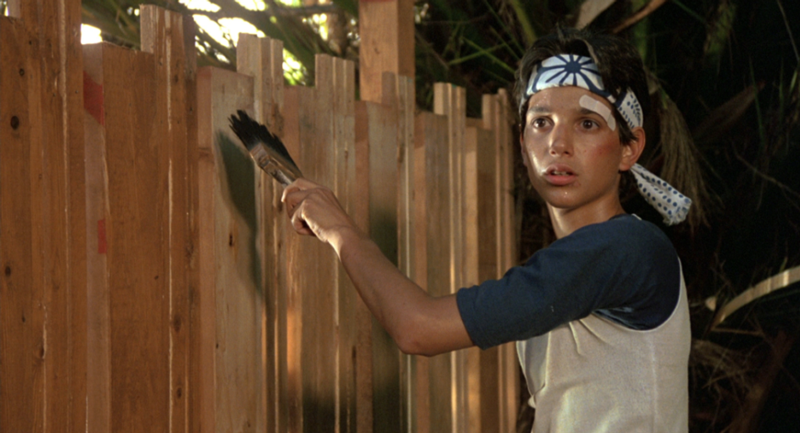PRODUCER RESOURCES
HOW TO WRITE A SCREENPLAY YOU CAN SELL
Here’s a different approach to how to write a screenplay. My goal isn’t for you to simply write a screenplay – it’s to write a script you can sell.

How To Write A Screenplay – Overview
Have you been struggling to write a screenplay or sell a screenplay you’ve written? This post is for you.
I’ve worked with many screenwriters to help them make their first sale. I’m not talking about selling the first thing you write – I’m talking about writing the first thing that you actually sell.
In my experience, screenwriters need to take four important steps before they can sell a screenplay for the first time. Today I’m going to explain the four steps and give you specific things you can do to learn how to write a screenplay you can sell.
It’s A Hard Knock Life (But It Doesn’t Have To Be)
Prior to making the first sale, a screenwriter will often:
- Develop the wrong ideas
- Work on projects that go nowhere
- Make rookie pitching mistakes
- Implement bad, unhelpful notes
- Botch meetings with VIPs
- Waste years of time
This is where most screenwriters are: at the beginning of a “hard knocks” education.
But can you learn how to write a screenplay without several years of wrong turns, hard knocks, and wasted time? In a word, yes.
WARNING: If you think writing a screenplay will be easy and that you’re going to cash your script in like a lottery ticket, you’re in the wrong place.
My approach requires overcoming fear, making tough choices, and working hard. That said, it can be done – and it’s a lot better than getting beaten up by Hollywood over a period of years.
How To Write A Screenplay Like The Karate Kid
Most screenwriters who have not sold a script yet are like Ralph Macchio’s character Daniel in the original The Karate Kid.
For those of you who don’t know, this is a story about a boy from the wrong side of the tracks who learns karate and becomes an honorable man like his teacher.
In the beginning of the movie, Daniel is getting beat up a lot by the bigger kids at his new high school. This is what it feels like to be new to the screenwriting game.
Instead of getting physically beat up, beginning screenwriters get told “No” over and again. Producers won’t take their calls. Agents won’t read their script. It’s nearly impossible to get a meeting with someone who can actually do something.
Some beginning screenwriters think it’s because they lack connections, and that may be true. But it’s not the only problem. So let me get all Miyagi on you for a minute.
Wax On, Wax Off
Remember when Miyagi starts teaching Daniel karate? He doesn’t start with punches and kicks. It’s “paint the house side-to-side,” “sand the floor,” “paint the fence,” and “wax-on, wax-off.”

Daniel hates it because it feels like busywork – until he realizes that he’s been learning karate the whole time. Better yet, his fundamentals are so good that he’s a better fighter than the bullies who just learn to kick and punch.
How To Write A Screenplay Step 1:
Focus On ONE GENRE
Most aspiring writers do not want to hear this. That’s okay.
You want to preserve your creative freedom. You’ve got ideas for so many things – and you may have some viable ideas in different genres.
Most beginning screenwriters create projects in lots of different genres and fail to sell them, over and over again. Then, one day, when they’ve finally written their tenth project in one genre, they get an agent and finally sell their first screenplay! At that point, three things will often happen quickly:
- The agent sells one of your other projects in THE SAME GENRE and typically for more money than the first sale.
- The agent gets you meetings for assignments for projects in THE SAME GENRE. This work is how most screenwriters support themselves.
- You focus your energy and attention to developing projects in THE SAME GENRE because you realize that there’s a much better chance you’ll get paid.
To Succeed In Hollywood You Have To Focus
This isn’t just true for you – it’s true for decision-makers as well. When a decision-maker considers purchasing a script, that’s a big decision. The script will cost a lot of money to buy and even more money to produce. This puts the decision-maker’s reputation on the line. If you are developing multiple projects in different genres, decision-makers see your unfocused creative resume and think:
- You are unsure about what you want to do in the business.
- You lack the expert knowledge of any particular area.
- I would rather work with someone else.
If you are developing multiple projects in the same genre, executives and other decision-makers see that and think:
- You know what you want.
- You are an expert in this area.
- I want to work with this person.
It is better to create ten projects in one genre than ten projects in different genres.
Take The First Step Now
If you want to be able to focus in one genre, you have to feel good about limiting yourself to one particular area. Try this:
- Make a list of your ten favorite movies.
- Make a list of the last ten movies you’ve seen and enjoyed.
- Make a list of your ten favorite novels.
- Make a list of the last ten novels you’ve read and enjoyed.
The genre most of these projects are in – that’s probably your genre. Focus here for now. Once you’ve sold a few things, then you can branch out.
How To Write A Screenplay Step 2:
Emphasize STORY Development
Most beginning writers think they already know how to write a story. You probably know that a story is a journey of transformation. A hero wants to achieve the goal and there’s an obstacle in the way. This journey follows a structure expressed by Joseph Campbell’s monomyth, Blake Snyder’s Beat Sheet, and explicated further in these screenwriting books.
The question is, do you know story well enough to use it?
A lot of people know about the importance of diet and exercise. They know they should eat less, eat differently, exercise more – but they aren’t able to use what they know. Then there are professional athletes who live and breathe the principles of healthy living. They use what they know because it’s their career on the line.
To work as a professional screenwriter, this is the equivalent. You have to do more than just know how to write a story, you have to know it at a deep enough level that you can use what you know. Otherwise, you can read scripts, watch movies, write screenplays, and STILL not get anywhere.
The Secret To Learning Story: Pitching
If you develop one project into a complete script, you’ve written about 120 pages and one story. But if you develop fifty projects into 2-3 page pitches, you’ve also written about 120 pages – but you’ve created fifty stories.
That’s 50x the practice.
That’s how you learn story structure like the way you know your morning commute to work. Deeply, fully, automatically. That’s how you learn how to write a screenplay.
To learn how to write a screenplay, it is better to develop fifty pitches than to write one script.
Take The Second Step Now
Try this:
- Come up with 50 short pitches (1-3 sentences).
- Of these, develop 10 complete pitches (1-3 pages).
- Of these, draft 2 treatments (10-30 pages).
- Then, write one script.

How To Write A Screenplay Step 3:
Get Feedback Early And Often
Most beginning writers do not want to get feedback. They think that feedback is typically unhelpful, and besides, no one really knows what will work, right? So why get feedback?
Then, after writing a dozen screenplays over a period of years that don’t sell, they start to think that maybe, just maybe, if they took more time to get better quality feedback, maybe they’d save themselves some time and heartache.
Professional writers get feedback early and often.
Before a professional screenwriter goes to script, they get feedback on their pitches to select their best ideas. Then they get feedback on their complete pitches and treatments to make sure they are executing it well. They spend a lot of time testing their stories because they know it will save them a ton of time when it comes to writing the screenplays.
It is better to get feedback at least ten times on your pitch before you write the script than to get ten reads on your script.
Take The Third Step Now
The keys to getting good feedback are:
- Structure your pitch to make it easy to understand.
- Pitch to members of your target audience.
- Pitch to at least three people so you can see patterns.
Try this:
- Identify three close friends or family members you trust to be honest with you and who are in your target audience (i.e., they watch movies in your genre of choice). None of these people can be gatekeepers or decision-makers.
- Ask them if they would read something for you and give you their feedback. Don’t just send them something – ask first.
- Send an email with your 20 short pitches to these three people. Ask them what they like and most especially what they don’t like. You can get their notes via email or phone.
- After you get their feedback, send them a note to express your gratitude.
- Then, revise your top ten short pitches.
- Identify three completely different people who meet the criteria of being trustworthy, in your target audience, and are not gatekeepers or decision-makers.
- After asking permission, send them your ten revised pitches.
- After you receive their feedback, send each a note as well.
- Repeat this process with your top 3 pitches and three completely different people.
- Then, take your best pitch, develop it into a 1-3 page summary, and do a round of feedback from a new group of people, or you can return to the first group if the well has run dry.
- Repeat two more times with 1-3 page summaries of different ideas (which you send to different feedback groups). Take your best idea and develop it into a treatment (10-30 pages).
- Repeat the feedback process with this treatment, then again with your revision of the treatment based on the feedback, then again with your next revision.
- Then, write the script.
This may sound like it could take a lot of time – it does. However, it takes less time than writing full screenplays, and it makes it more likely that you learn how to write a screenplay you’re able to sell.
How To Write A Screenplay Step 4:
Immerse Yourself To Learn Structure
Every successful writer I know, at some point, has taken one produced project and analyzed it down to the atomic level.
They know the core story, every beat, every sequence, every scene, every shot. They can watch the movie and turn the pages of the script in their head.
Once you’ve done this, watching movies and reading scripts is a different thing.
In a way, it ruins it because it’s hard just to enjoy the story because you’re also watching how the story is being told. That’s what it’s like to be a professional writer.
Beginners may be willing to watch lots of movies and read lots of scripts. It’s fun, and they think they’re getting a complete education. Unfortunately, they’re only building superficial knowledge. They don’t really understand what’s going on at the deeper levels inside the movie.
They’re like a person who can look at an analog watch and tell the time – and they think that means they know how to build a watch. If you want to know how to build a watch, at some point, you will have to take a watch apart, piece by piece, down to the tiniest of the gears.
It is better to read one screenplay ten times than ten screenplays.
It is better to watch one movie ten times than ten movies.

Take The Fourth Step Now
Try this:
- Choose one successful film in your genre for which you can also get the script. This film should be something that lights a fire inside you.
- Get a copy of the movie. Don’t rent it; buy it.
- Get a copy of the script. Print it out one-sided.
- Watch the movie three times in a row.
- Read the script three times in a row.
- Watch the movie.
- Read the script.
- Watch the movie.
- Read the script and mark the beats (e.g. Catalyst, Act Breaks, All Is Lost)
- Watch the movie.
- Read the script and break it into approximately 40 notecards, aka “The Board.” Chart each act by sequence and scene.
- Watch the movie.
- Read the script and identify the transformation or change in each scene.
With respect, if you haven’t done this, then in a way, it doesn’t matter how many movies you’ve seen or how many scripts you’ve read. Because you don’t fully understand what you’re seeing or reading.
Once you have immersed yourself in a template, the right template, you will understand screenplay structure. Not just story structure, but screenplay structure. Sequences and scenes. Tone and pacing. Creating moments.
There are many wonderful scripts available online.
Here are some screenplays to get you started:
- Action: Gravity
- Animation: Up
- Biopic: The King’s Speech
- Comedy: Mean Girls
- Drama: Flight
- Romantic Comedy: Bridesmaids
- Science-fiction: Looper
- Spy thriller: Tinker Tailor Soldier Spy
How To Write A Screenplay – Review
If you want to learn how to write a screenplay you can actually sell, you can make a ton of frustrating mistakes over a period of years, or you can take these four steps:
- Focus on ONE genre
- Emphasize story development
- Get feedback early and often
- Immerse yourself to learn structure
Take those four steps, THEN write your screenplay.
. . . . . . . . . . . . . . . . . . . . . . . .
DANIEL
I haven’t learned a goddam thing!
MIYAGI
Learn plenty.
DANIEL
Yeah, how to sand your decks, how to wax your cars, how to paint your house.
MIYAGI
Not everything is as looks, you know.

About the Author
Stephanie Palmer, a former MGM Pictures executive and best-selling author of Good in a Room, has been featured by NBC, ABC, CBS, Los Angeles Times, NPR, Variety and many more. To connect with Stephanie: goodinaroom.com, facebook.com/GoodInARoom.
Explore more articles and research at Producers Resources.